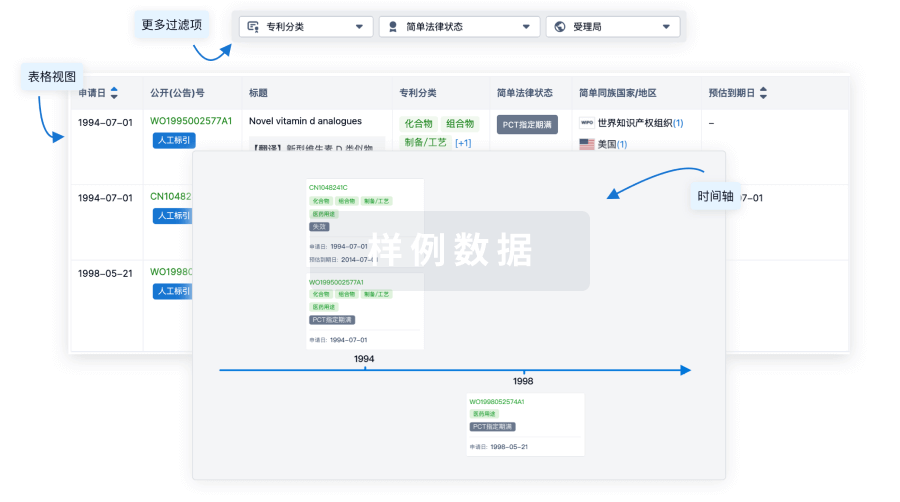更新于:2024-12-21
Sipoglitazar
更新于:2024-12-21
概要
基本信息
在研机构- |
最高研发阶段终止临床2期 |
首次获批日期- |
最高研发阶段(中国)- |
特殊审评- |
登录后查看时间轴
结构
分子式C25H25N3O4S |
InChIKeySRFCAWATPLCLMG-UHFFFAOYSA-N |
CAS号342026-92-0 |
关联
100 项与 Sipoglitazar 相关的临床结果
登录后查看更多信息
100 项与 Sipoglitazar 相关的转化医学
登录后查看更多信息
100 项与 Sipoglitazar 相关的专利(医药)
登录后查看更多信息
6
项与 Sipoglitazar 相关的文献(医药)2014-04-01·Journal of clinical pharmacology3区 · 医学
A model-based approach to analyze the influence of UGT2B15 polymorphism driven pharmacokinetic differences on the pharmacodynamic response of the PPAR agonist sipoglitazar
3区 · 医学
Article
作者: Scott, Graham ; Danhof, Meindert ; Stringer, Frances ; DeJongh, Joost
The pharmacokinetics of sipoglitazar, a peroxisome proliferator activated receptor agonist, are subject to high inter-individual variability resulting from a polymorphism of the UGT2B15 genotype. The aim of the current analysis was to apply a PK-PD model-based approach to evaluate the influence of UGT2B15 driven pharmacokinetic differences on the clinical response. Efficacy and safety of sipoglitazar compared to placebo were assessed in Type 2 Diabetes Mellitus patients in two Phase II randomized, double-blind studies (sipoglitazar once daily: 8, 16, 32, or 64 mg; sipoglitazar twice daily: 16 or 32 mg; rosiglitazone 8 mg once daily and placebo for 13 weeks; n = 780). Changes in fasting plasma glucose (FPG) and glycosylated hemoglobin (HbA1c) levels over time were described as a function of individual drug exposure using a simultaneous, cascading indirect response model structure. The effects on FPG and HbA1c could successfully be described for placebo, rosiglitazone, and sipoglitazar treated groups in all three UGT2B15 genotypes. Differences in drug effects between genotypes were fully explained by differences in drug exposure. The current PK-PD analysis confirms that UGT2B15 genotype is a major determinant for differences in FPG and HbA1c response to sipoglitazar treatment between Type 2 Diabetes mellitus patients, due to related differences in drug exposure.
2013-03-01·Journal of clinical pharmacology3区 · 医学
Evaluation of the Impact of UGT Polymorphism on the Pharmacokinetics and Pharmacodynamics of the Novel PPAR Agonist Sipoglitazar
3区 · 医学
Article
作者: Urquhart, Richard ; Scott, Graham ; Ploeger, Bart A. ; Jongh, Joost De ; Stringer, Frances ; Karim, Aziz ; Danhof, Meindert
Abstract:
Sipoglitazar is a peroxisome proliferator–activated receptor α, δ, and γ agonist. During phase I, a wide distribution of clearance between individuals was observed. Hypothesized to result from a polymorphism in the uridine 5′‐diphospate‐glucuronosyltransferase (UGT)2B15 enzyme, pharmacogenetic samples were collected from each individual for genotyping UGT2B15 in a subsequent phase I trial in healthy subjects (n = 524) and in 2 phase II trials in type 2 diabetes subjects (n = 627), total genotype frequency was as follows: *1/*1 (22%), *1/*2 (51%), and *2/*2 (27%). The impact of genotype on exposure was assessed using a pharmacokinetic modeling approach; the influence of genotype on efficacy was evaluated using 12‐week HbA1c change from baseline. Model analysis demonstrated UGT2B15 genotype accounted significantly for the variability in sipoglitazar clearance; however, a small fraction of subjects had a clearance that could not be explained entirely by genotype. HbA1c drop increased with daily drug dose. When stratified by both dose and genotype, HbA1c drop was larger in the UGT2B15*2/*2 compared with UGT2B15*1/*1 and UGT2B15*1/*2 genotypes (P < .05). In summary, UGT2B15 genotype is a strong predictor for sipoglitazar clearance; a greater clinical response observed in the UGT2B15*2/*2 genotype appears to confirm this. However, overlap in individual rates of clearance across genotypes remains after accounting for genotype.
2013-03-01·European journal of clinical pharmacology3区 · 医学
The effect of genetic polymorphisms in UGT2B15 on the pharmacokinetic profile of sipoglitazar, a novel anti-diabetic agent
3区 · 医学
Article
作者: Richard Urquhart ; Judith Kinley ; Mitsuhiro Nishihara ; Marian Valbuena ; Frances Stringer ; Graham Scott
PURPOSE:
Sipoglitazar was a novel, azolealkanoic acid derivative that possesses selective activity for the peroxisome proliferator-activated receptors (PPAR) PPARγ, PPARα, and PPARδ. The compound undergoes phase II biotransformation by conjugation catalyzed by UDP-glucuronosyltransferase (UGT). The aim of this analysis was to explore the influence of genetic polymorphism in UGT on the pharmacokinetics of sipoglitazar.
METHODS:
Three preliminary phase I clinical pharmacology studies were conducted in tandem in healthy human subjects. Genotyping was undertaken in a total of 82 subjects in the phase I program for the purpose of genotyping UGT polymorphisms. Plasma samples were collected for up to 48 h post-dose to characterize the pharmacokinetic profile following a single oral dose of the drug.
RESULTS:
Plasma concentrations of sipoglitazar and the distribution of dose-normalized individual values for area under the plasma concentration-time curve from time 0 to infinity (AUC(0-∞)) before any stratification were considerably skewed with a multi-modal distribution. The proportion of variability in AUC(0-∞) explained by UGT2B15 was 66.7 % (P < 0.0001); the addition of other genetic or demographic factors was not statistically significant. Subjects homozygous for the UGT2B15 D85Y variant (UGT2B15*2/*2) were exposed to greater plasma concentrations of sipoglitazar than subjects homozygous for the wild-type allele UGT2B15*1/*1 (3.26-fold higher) or heterozygous allele UGT2B15*1/*2 (2.16-fold higher).
CONCLUSIONS:
These results indicate that sipoglitazar clearance is substantially modified by UGT2B15 enzyme variants, with higher exposure observed in the UGT2B15*2/*2 genotype group.
100 项与 Sipoglitazar 相关的药物交易
登录后查看更多信息
研发状态
10 条进展最快的记录, 后查看更多信息
登录
| 适应症 | 最高研发状态 | 国家/地区 | 公司 | 日期 |
|---|---|---|---|---|
| 糖尿病 | 临床2期 | 美国 | - | - |
| 糖尿病 | 临床2期 | 日本 | - | - |
| 糖尿病 | 临床2期 | 欧洲 | - | - |
| 糖尿病 | 临床2期 | - | - |
登录后查看更多信息
临床结果
临床结果
适应症
分期
评价
查看全部结果
| 研究 | 分期 | 人群特征 | 评价人数 | 分组 | 结果 | 评价 | 发布日期 |
|---|
No Data | |||||||
登录后查看更多信息
转化医学
使用我们的转化医学数据加速您的研究。
登录
或

药物交易
使用我们的药物交易数据加速您的研究。
登录
或

核心专利
使用我们的核心专利数据促进您的研究。
登录
或

临床分析
紧跟全球注册中心的最新临床试验。
登录
或

批准
利用最新的监管批准信息加速您的研究。
登录
或

特殊审评
只需点击几下即可了解关键药物信息。
登录
或

标准版
¥16800
元/账号/年
新药情报库 | 省钱又好用!
立即使用
来和芽仔聊天吧
立即开始免费试用!
智慧芽新药情报库是智慧芽专为生命科学人士构建的基于AI的创新药情报平台,助您全方位提升您的研发与决策效率。
立即开始数据试用!
智慧芽新药库数据也通过智慧芽数据服务平台,以API或者数据包形式对外开放,助您更加充分利用智慧芽新药情报信息。
生物序列数据库
生物药研发创新
免费使用
化学结构数据库
小分子化药研发创新
免费使用

